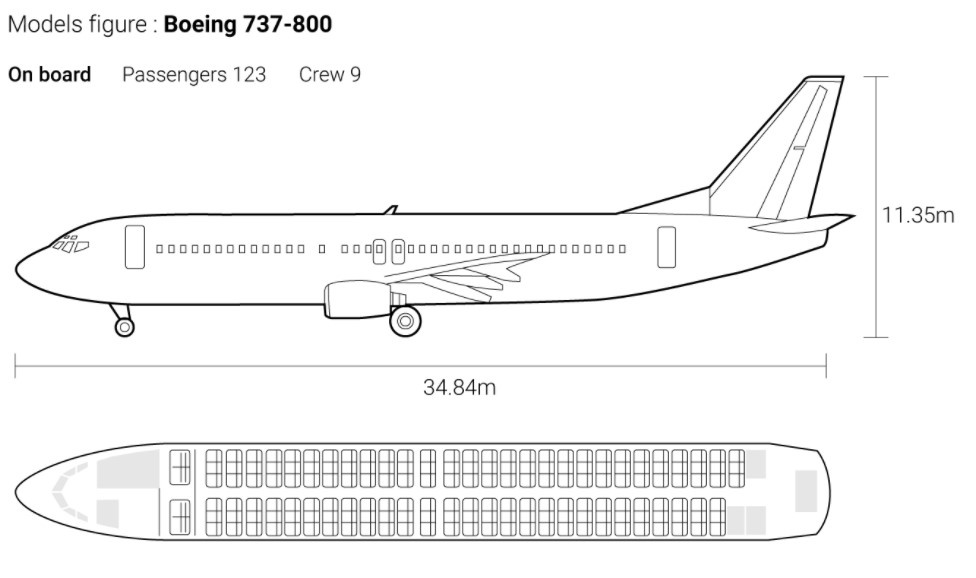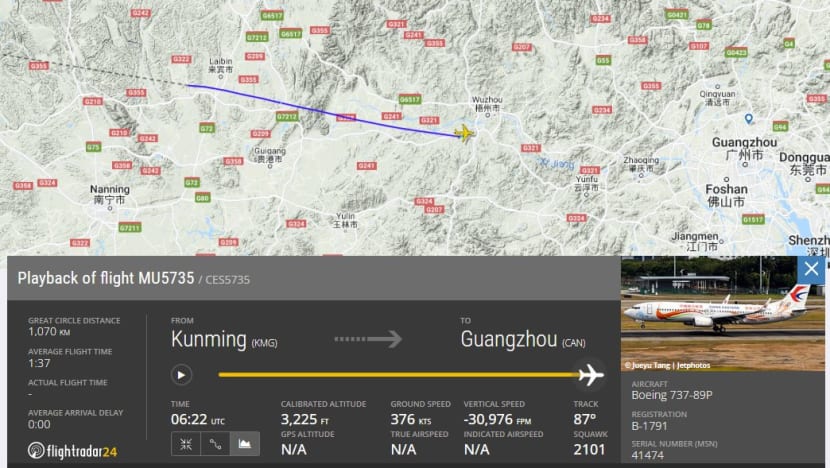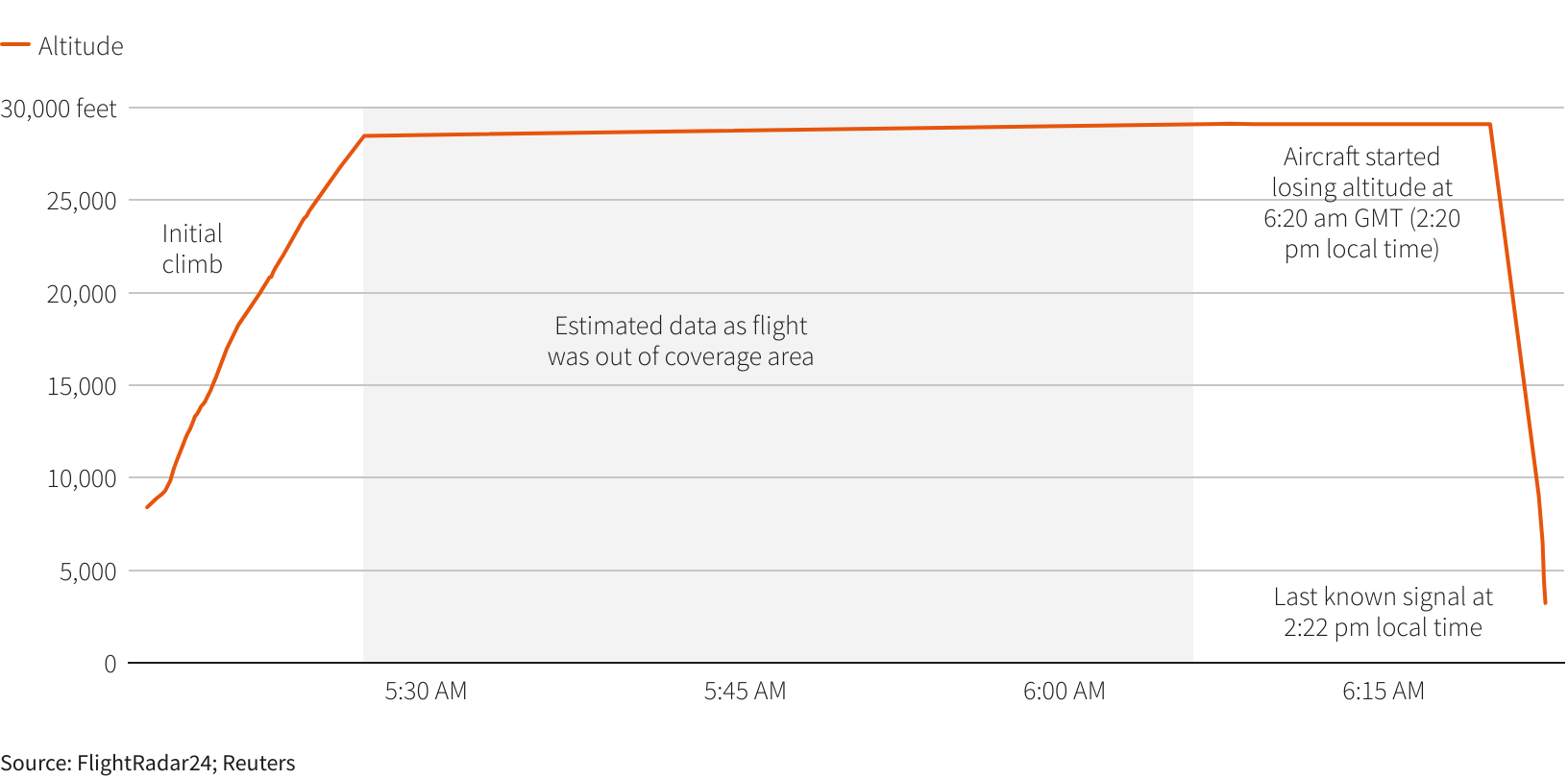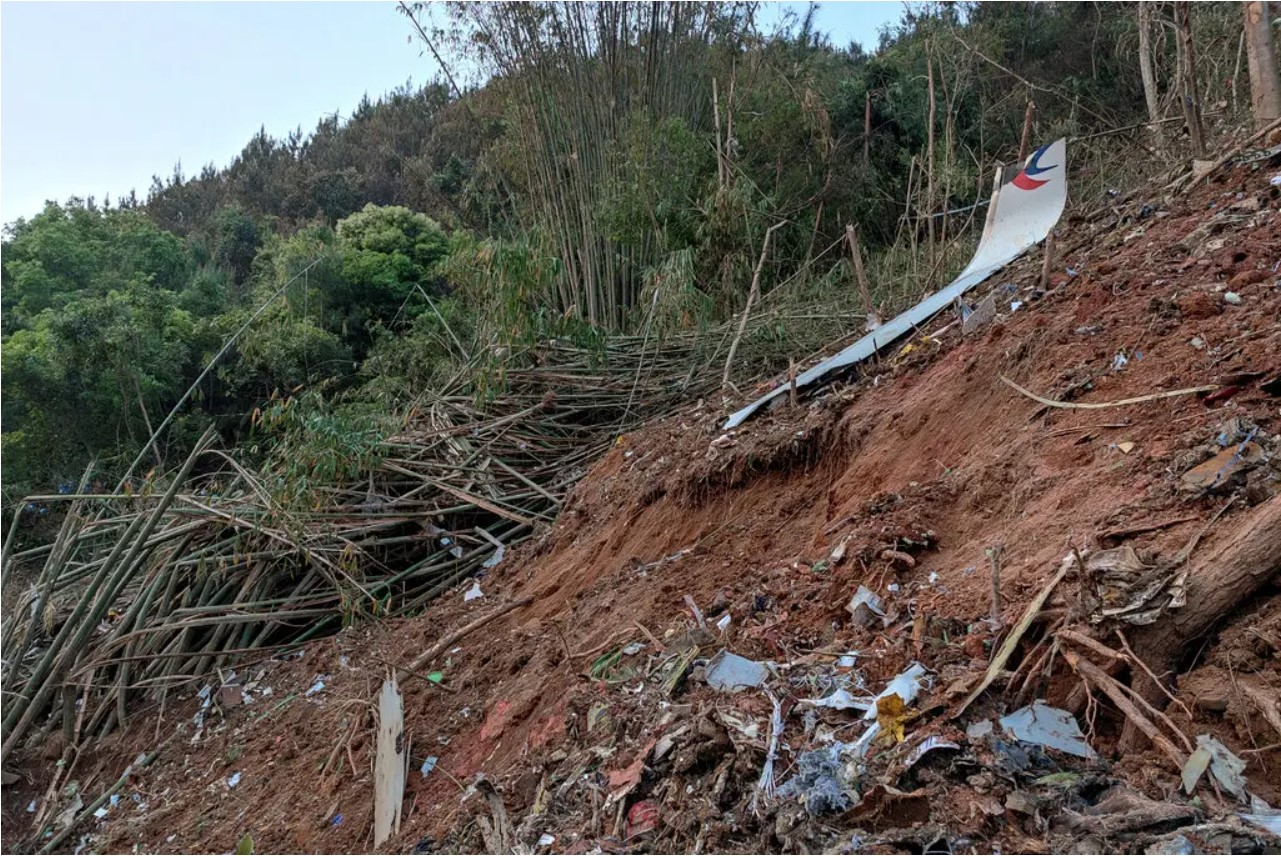On the list of things to be rudely awoken to, the revelations of the atrocities committed in the Holocaust and the Russian invasion of Ukraine would be on the top of the list in the 21st century.
With the announcement that a Chinese Eastern Airlines plane crashed on 21 March, perhaps your mind might roam over to “was it shot down” or “was it just an accident?”
Well, here are 10 facts that are known about the aviation accident so far.
Boeing 737-800 Flight from Kunming to Guangzhou
The plane that alleged crashed in the mountains of China’ southern Guangxi region was a Boeing 737-800NG aircraft, called Flight MU5735.

The plane had taken off in the city of Kunming, the capital of the Yunnan province at 1:11pm.
Its destination had been plotted for Guangzhou, the capital of Guangdong which is situated near the borders of Hong Kong.
Flight MU3735 was supposed to make proper landing at 3:05pm in Guangzhou.
According to the Civil Aviation Administration of China (CAAC), the Boeing 737 “lost airborne contact over Wuzhou” city in the Guangxi region, and it has been confirmed that the plane did crash.

The Final Moments Before the Crash
According to the flight-tracking done by FlightRadar24, signals coming from the Boeing 737 aircraft stopped at 2:22pm.

The plan had been cruising at an altitude of 29,100 feet at 2:19pm (06:19 GMT), as per usual.
However, 1 minutes and 15 seconds later, the next available data showed that it had descended 9,075 feet.
In another 20 seconds, at 2:22pm, its last tracked altitude was 3,225 feet, barely a kilometre above the ground, going at the speed of 376 knots.

Apparently, the terrifying last seconds of the plane nosediving into the mountains had been caught on video by a local mining company’s security camera.
Final seconds of #MU5735 pic.twitter.com/gCoMX1iMDL
— ChinaAviationReview (@ChinaAvReview) March 21, 2022
Plane Caused a Mountain Fire After Crashing
A local villager in the area told the online newsfeed Jimu News that the plane had disintergrated and started a fire that burned down trees and bamboo before the local rescuers and firefighters extinguished most of the inferno.
When news of the aviation accident broke out, the Chinese President Xi Jingping had immediately called the local authorities into action, mobilising 23 fire engines and 117 rescuers to the site.
After the fire was put out, scantily anything was left of the plane besides a broken wing that was buried under soil and ashes.

Rescue Efforts
Besides the 23 firefighting trucks and 113 rescuers who were thrust into the relief efforts, rescue works flooded the crash site by the hundreds.
Judging from the pictures and videos gathered, the fire in the mountainous hills with bamboo and banana tress had been put out in quick order.
Afterwards, there had been a flurry of night-time activity as rescuers set up tents and command posts with power supplies and lights. Dozens of ambulances were lined up in the peripheries in hopes of finding any survivors.
The local workers on motorbikes offered their assistance by carrying in water, food, and tents.
Searches are currently ongoing, but precipitous showers are being forecasted, which could impede the search on the hillsides that are covered by bushes, ferns, and bamboos.
Reports on the Survivors
Flight MU5735 had been carrying 123 passengers with 9 crew members on board.
Even seven hours after the aviation accident, there had been no official confirmation of any casualties, which raised concerns if there were any survivors among them.
The People’s Daily quoted a provincial firefighting department official saying that there were no signs of life among the remaining debris.
In the photos that are circulating on state and social media, all it shows is a piece of plane on a slanted and scarred hillside.
The fire had been extinguished, but no personal belongings were found.
The worst news had come from a first-hand witness, a villager by the surname of Liu, who had rushed closer to the crash site on his motorbike upon hearing the loud explosion.
Despite being one of the earliest, he only managed to spot an aircraft wing and fragments of clothing hanging from the trees.
Help is Being Offered to the Bereaved Families
On China’s state television CCTV, President Xi Jingping had ordered the officials to launch an emergency response and investigate the cause of the aviation accident as soon as possible.
Following closely, China’s Premier Li Keqiang instructed the officials to try and search for survivors with their utmost abilities, while providing sufficient comfort to the victims’ families.
An emergency telephone assistance line has been set up by China Eastern for the families.
The carrier expressed its deep condolences to the families who lost their loved ones, even turning its website into the mourning colours of black and white.

Both Kunming and Guangzhou airports have also extended a helping hand towards the families who had been waiting there.
The Victims and Their Families
Up until now, not much is known about the victims on the plane.
One businessman confided in Jiemian News that he knew six people that were on board, including a 10-year-old boy, who had been travelling to attend a funeral in Guangzhou.
Other families were seen waiting anxiously at the airports in hopes of any news.
Join our Telegram channel for more entertaining and informative articles at https://t.me/goodyfeedsg or download the Goody Feed app here: https://goodyfeed.com/app/
Possible Reasons for the Crash
While the investigations are still ongoing, some theories and speculation have started popping out.
Wang Yana, the editor-in-chief for Aerospace Knowledge suspects that a deep stall could have caused the plane to suddenly plunge downwards.
Deep stalls can be caused by piloting errors or turbulence, but the cause can only be identified after the black box—a Flight Data Recorder of an Aeroplane—is found.
The main causes of commercial air transport crashes tend to be maintenance issues, pilot errors, or sabotage.
However, one of the reasons that have been ruled out almost immediately was a manufacturing or design error.
The Boeing 737 that served as Flight MU5735 has been in service for nearly seven years, starting from 2015. Therefore, Cowen analysts note that it seems unlikely, although not impossible, that the cause of the accident was a design or manufacturing issue.
The History of 737 Boeing Planes
The Boeing 737-800 was first introduced to the public eye in 1998, and it is part of a class of Boeing jets known as 737-NG.
Although the “New Generation” had safety issues that were remarked upon by US regulation, none of them were detrimental enough to ground the planes.
In 2018, one passenger was killed on a Boeing 737-7000, another plane in the New Generation family. In that instance, the engine fan blade on the Southwest Airlines flight broke and caused a part of the engine covering to hit the side of the plane.
It smashed one of the windows, causing the cabin to depressurize rapidly. The crew was able to land the plane safely, but the woman sitting next to the aforementioned window was killed.
In response, the National Transportation Safety Board recommended that Boeing redesign the jet’s engine covers in 2019, to prevent a similar malfunction from happening again. Boeing had agreed.
In some older planes, cracks were discovered in a component that was meant to fix the wings in place. Before the matter was resolved, a handful of those planes were grounded for a year at least.
Besides that, the other fatal accidents that involved the 737-800 model usually occurred due to external factors: either the planes were landing during bad weather, or it had been shot out of the sky by missile in Iran in 2020.
On the other hand, its predecessor the Boeing 737 Max had a design flaw, which led two crashes in 2018 and 2019.
It caused a global grounding of that particular aircraft for 20 months, which cost Boeing tens of billions of dollars.
However, that design flaw in the 737 Max does not exist in the 737-800 line.
China’s Record of Aviation Accidents
While China has a good aviation safety record, it’s less transparent than the United States and Australia, where regulators will release detailed reports of even non-fatal accidents.
For the same reason, the Asia Managing Editor at the industry publication Flightglobal stated that there have been concerns where safety lapses in the mainland have gone unreported.
Regardless, the last fatal aviation accident that China had was in 2010, where 44 of 96 people were killed when an Embraer E-190 region jet under the Henan Airlines had crashed as it approached the Yichun Airport in low visibility.
China has also been more cautious with the flight that it employs.
For instance, after Boeing 737 Max had two fatal crashes in 2018 and 2019 respectively, it grounded that series for more than three years, which is longer than most countries.
In 2015, China Eastern Airlines received a “Flight Safety Diamond Award” from the CAAC for flying over 100 million hours safely.
The CAAC also reported that as of 19 February, China’s ever-expanding airline industry has recorded more than 100 million continuous hours of safe flight, which makes this abrupt accident come as a huge shock.
Read Also:
- Authorities Looking Into People Who Use PMA When They Don’t Need Them
- Pet Cats Are Gathering at East Coast Park Every Sat & They Might Not Be Happy
- Ukraine’s DPM Slammed China for Giving Them Blankets & Beddings Instead of Helping Them Directly
- Russia Claims to Use Hypersonic Missile in Ukraine; Here’s What It Is
Featured Images: YouTube (The Independent) & China News




